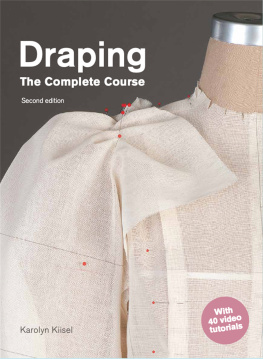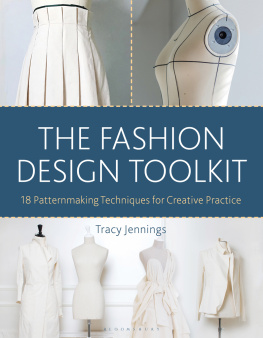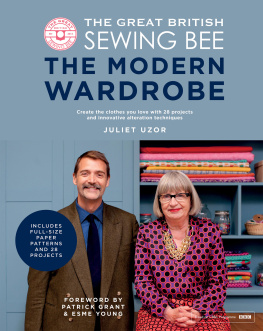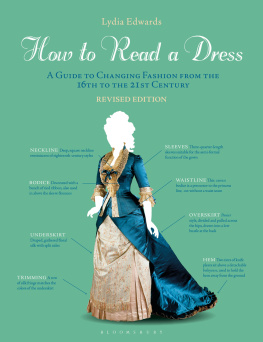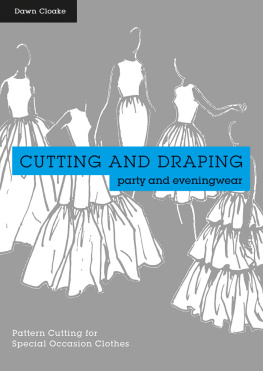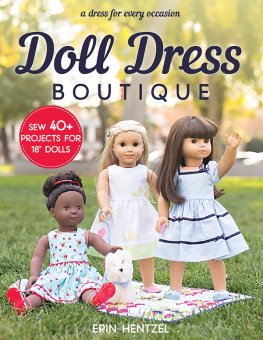Contents
Guide
Draping
Draping
The Complete Course
Second edition
Karolyn Kiisel
LAURENCE KING PUBLISHING
An imprint of Quercus Editions Ltd
www.laurenceking.com/student/

Published in Great Britain by
Laurence King Student & Professional
An imprint of Quercus Editions Ltd
Carmelite House
50 Victoria Embankment
London EC4Y 0DZ
An Hachette UK company
First edition published in 2013
This edition published in 2020
Text 2020 Karolyn Kiisel
The moral right of Karolyn Kiisel to be identified as the author of this work has been asserted in accordance with the Copyright, Designs and Patents Act, 1988.
All rights reserved. No part of this publication may be reproduced or transmitted in any form or by any means, electronic or mechanical, including photocopy, recording, or any information storage and retrieval system, without permission in writing from the publisher.
A CIP catalogue record for this book is available from the British Library
TPB ISBN 978-1-7862-7-231-7
Ebook ISBN 978-1-7862-7-931-6
Quercus Editions Ltd hereby exclude all liability to the extent permitted by law for any errors or omissions in this book and for any loss, damage or expense (whether direct or indirect) suffered by a third party relying on any information contained in this book.
Commissioning editor: Sophie Wise
Editor: Charlotte Selby
Design: The Urban Ant Ltd
Picture research: Heather Vickers
Photography: Sia Aryai Photography
Line art: Selina Eugenio-Sanders and Briana Boyko
Contents
Related study material is available from the Laurence King website at www.laurenceking.com
Introduction
Draping is an art
Draping is the term for using fabric to create a design directly on a dress form, an essential skill for a fashion designer.
The French word for draping is moulage, meaning to mold or sculpt. Fashion designers are artists, giving physical expression to concepts as they work with form, space, and energy flow. Impact and emotion enter with the use of color and surface detail, but first a silhouette must be sculpted.
Learning to drape involves training the eye to recognize balance, symmetry, and a graceful line, and training the hand to dexterity in cutting, pinning, and joining complex curves.
Ultimately, success for designers and artists lies in finding their own unique style of expression. Draping is a skill that helps the individuality of the designers creative vision to emerge.
This book will include draping ancient forms of clothing, historical garments from artworks, costumes from movies, styles from past decades, and contemporary designs. At the beginning of each chapter are examples of early forms of clothingoften simple woven panels of cloth, wrapped, tied, or draped over the body. Understanding how a modern blouse or jacket evolved from these basic shapes makes it easier to conceptualize how to drape one. It is less intimidating when understanding that, for thousands of years, people have created beautiful, practical, transformational shapes from a simple length of woven cloth.
Many of the designs in the book are taken from the Golden Age of Draping. From the late 1930s through the 1960s, Hollywood costume designers used the unlimited resources from the studios to clothe their stars. After World War II, the couture ateliers blossomed. Balenciaga and Dior were just two of the many designers using new fabrics and techniques to produce beautifully draped and impeccably tailored couture clothing. Studying these classic, iconic styles teaches important basic techniques and hones observational skills. To create something new, one must know what has come before.
The value of learning to drape
When draping, the toile is a work in progress, continuing to evolve until it is taken off the form and turned into a pattern.
Draping a new design, rather than drafting a flat pattern is, for many, an easier way to develop the important skill of visualizing how a two-dimensional sketch moves into a three-dimensional form. The contours of the garment can be seen taking shape during the draping process, bringing immediate visual feedbackin contrast to pattern drafting, which involves guesswork, cutting, and sewing from the pattern before seeing the three-dimensional result.
Learning the basic skills means that draping can be done by anyone, just as our ancestors did with their simple tunics and robes.
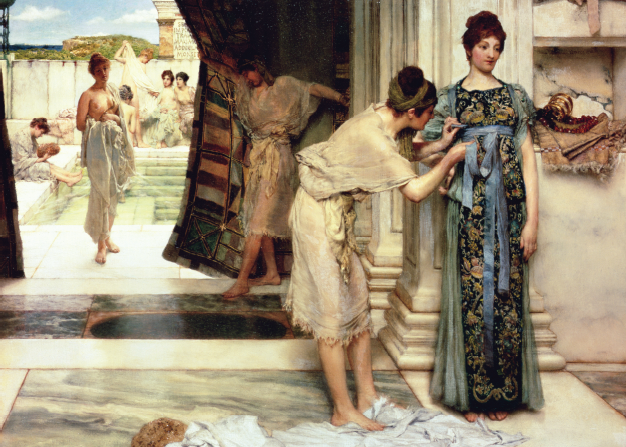
Creating beautifully draped clothing requires developing an eye for perfect composition. In Sir Lawrence Alma-Tademas The Frigidarium (1890), details are adjusted to bring the proportions into balance.
Creating a signature look
The ultimate goal of training in the skill of draping is to strengthen original expression while creating new silhouettes.
Clothes are marketed today less for their fit and finesse than by a designers look. In fashion, it is crucial for a new designer to develop a signature style to set them apart. Furthermore, people want clothes that have a specific look because it helps them define their own personal style. They want clothes that not only fit comfortably but that express attitudes and sensibilities. Like the actor who cannot get into character without a costume, people need the right clothes to communicate who they areto feel businesslike and assertive, perhaps, or relaxed and playful.
The first step in creating a signature look is to anchor a creative vision before beginning to drape. The inspiration can come from a sunset, a painting, a photograph of another design, or simply a feeling or attitude that you want to express. The challenge is to use the skills to execute a creative vision, while retaining the essence of the original inspiration. In doing so, personal flair becomes apparent, driven by decisions on proportion and line, scale and volume, subtleties of shape, and placement of details.
Refining the drape and adjusting the final proportions becomes very personal; you work on it until arriving at a balance that you like. When it pleases your eye, it is done. When continuing to explore the looks that attract you, and express what is in your heart, your own style inevitably emerges.
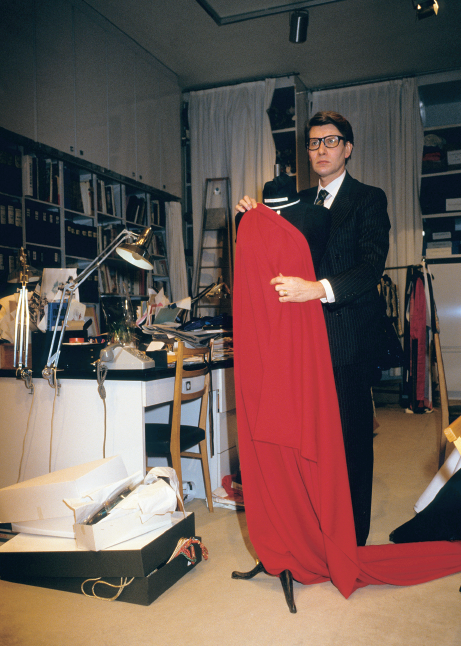
Yves Saint Laurent, a master of draping, created a new and unique fashion sense for women. His signature look is still sought after today.
Form follows function
Form follows function is basic design theory. If a designer is clear on the function or purpose of their design, the many choices to be made during the draping process will flow more naturally.
Clothing has many functions, from basic warmth and protection to expressing states of mind such as confidence, sexuality, or contentment. It is important to understand a garments physical as well as nonphysical purpose. How a garment makes a person feel is as important as how it will make them look.
For example, one crucial draping skill is understanding grainline placement. A simple tunic cut on the bias, which molds softly to the body, will have a totally different feel to one cut with the grain placed vertically, which will provide angularity and strength.

